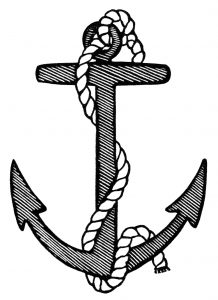 How we think and the way that we perceive information can have a powerful impact on our decisions. Often, the first piece of information we receive is what we will use for future reference when making decisions – and whether we feel those decisions are good or bad. This is referred to anchoring or anchoring bias and is very well described in Daniel Kahneman’s book, Thinking, Fast and Slow.
How we think and the way that we perceive information can have a powerful impact on our decisions. Often, the first piece of information we receive is what we will use for future reference when making decisions – and whether we feel those decisions are good or bad. This is referred to anchoring or anchoring bias and is very well described in Daniel Kahneman’s book, Thinking, Fast and Slow.
Let’s look at an example. Recently, I had a student ask me regarding his benefit package and starting salary he was offered from a potential employer. This student will finish a master’s degree in May and this will be the first “real” job the student will have out of school. Initially, the employer was talking to the student about project management and leadership opportunities. When it got down to brass tacks, the company was talking about a potential starting salary of approximately $140,000 annually. During this time another company was interviewing the student and was expecting to make an offer to him as well.
About a week later, the first company called the student and said they would like to offer him an entry level position starting at $90,000 annually. Initially, the student was dismayed and disappointed. How could they be talking just a week ago about $140,000 and then come back with an offer for $50,000 less? Needless to say his disappointment was evident when he was discussing his options with me. I told him that it can be tough to entertain an offer for $50,000 less than he was expecting when he was anchored to $140,000. In my head I was thinking, “Are you kidding me? You’re disappointed at ninety grand?”
Along with some other things, I mentioned to the student to think about job location, advancement and ultimately what would make him happy. He also mentioned that he was waiting to hear from the second company and that may impact his decision as well. It did.
A few days later I asked how thing were progressing and he said he had some wonderful news. He was smiling and couldn’t wait to talk until after class. When the time came, he said he had made a decision. He had chosen the first company. I was surprised. I was thinking surely the second company had come in with something bigger and better. As it turns out, the second company offered $20,000 lower than the first company. His anchoring point had changed.
What was once dismay at an offer $50,000 less than what he was expecting turned out to be $20,000 more than what he could get elsewhere. He was elated! Additionally, it also meant he could still live at home, save a ton of money, and get out of debt in no time. He left class that day happy with his first offer and excited to be a part of the company – even though they had cut his starting salary by $50,000! Since his anchoring point had changed (he was now anchored to $90,000) when another offer that came in was less, he was happy with the first offer.
Anchoring affects us in other ways as well. We can get anchored to stock returns, salaries, and many other financial and non-financial aspects. What may help in our decisions is to understand that we are susceptible to this cognitive bias and try to understand where our reference point is – the original thing to which we’re anchored. From there, we can try to consider other factors, such as what will make us happy, how the decision will affect our future, our family, and goals.


 Sterling Raskie, MSFS, CFP®, ChFC®
Sterling Raskie, MSFS, CFP®, ChFC® The latest in our Owner’s Manual series, A 401(k) Owner’s Manual, was published in January 2020 and is available on
The latest in our Owner’s Manual series, A 401(k) Owner’s Manual, was published in January 2020 and is available on  A Medicare Owner’s Manual, is updated with 2020 facts and figures. This manual is available on
A Medicare Owner’s Manual, is updated with 2020 facts and figures. This manual is available on  Social Security for the Suddenly Single can be found on Amazon at
Social Security for the Suddenly Single can be found on Amazon at  Sterling’s first book, Lose Weight Save Money, can be
Sterling’s first book, Lose Weight Save Money, can be  An IRA Owner’s Manual, 2nd Edition is available for purchase on Amazon. Click the link to choose the
An IRA Owner’s Manual, 2nd Edition is available for purchase on Amazon. Click the link to choose the  Jim’s book – A Social Security Owner’s Manual, is now available on Amazon. Click this link for the
Jim’s book – A Social Security Owner’s Manual, is now available on Amazon. Click this link for the  And if you’ve come here to learn about queuing waterfowl, I apologize for the confusion. You may want to discuss your question with Lester, my loyal watchduck and self-proclaimed “advisor’s advisor”.
And if you’ve come here to learn about queuing waterfowl, I apologize for the confusion. You may want to discuss your question with Lester, my loyal watchduck and self-proclaimed “advisor’s advisor”.
Such a hard thing to remember – not getting attached to those anchors. The bigger picture matters so much.
Hahaha, $90k is still FANTASTIC for an entry-level job, so he’ll do just fine. It’s all about perspective of course. $90k is a fortune here in Texas, but in New York City that salary wouldn’t even pay your rent.
Indeed!
No doubt! :)